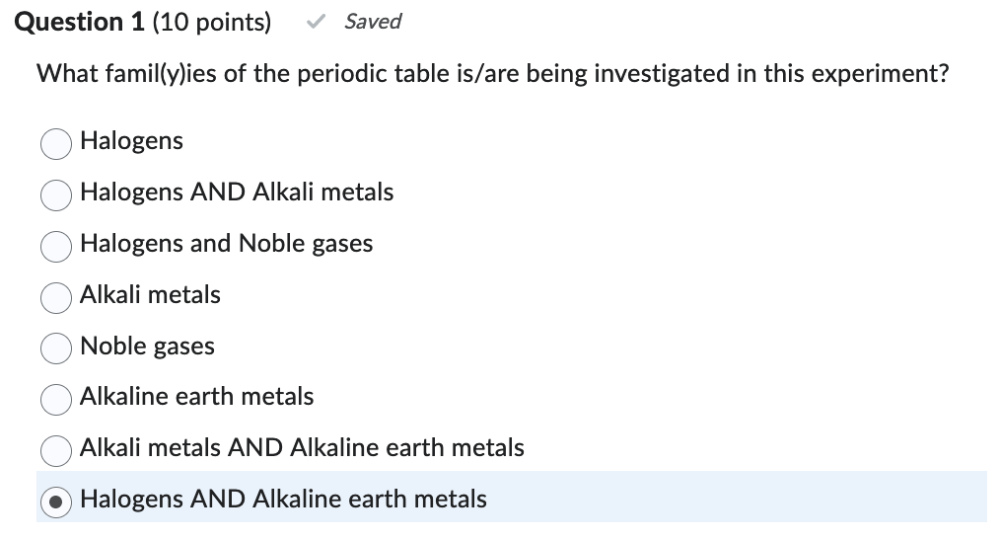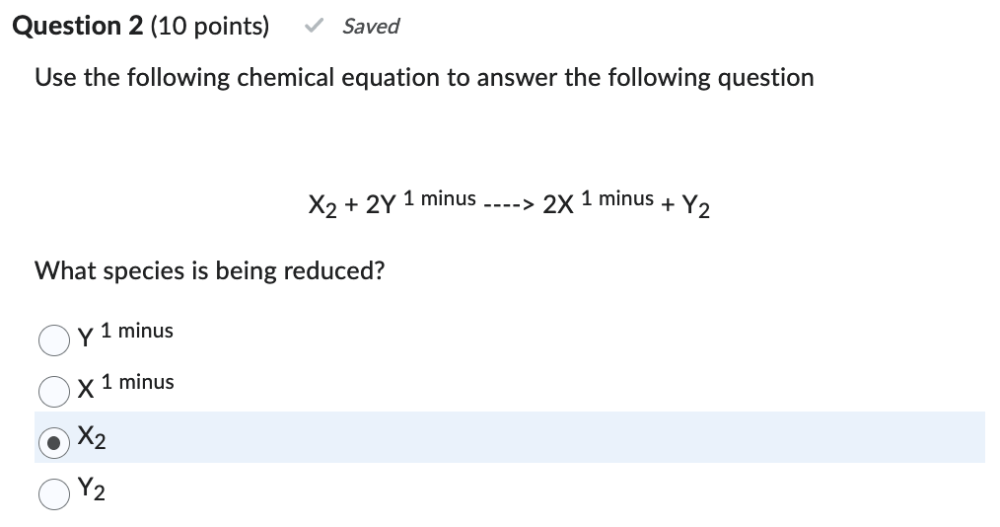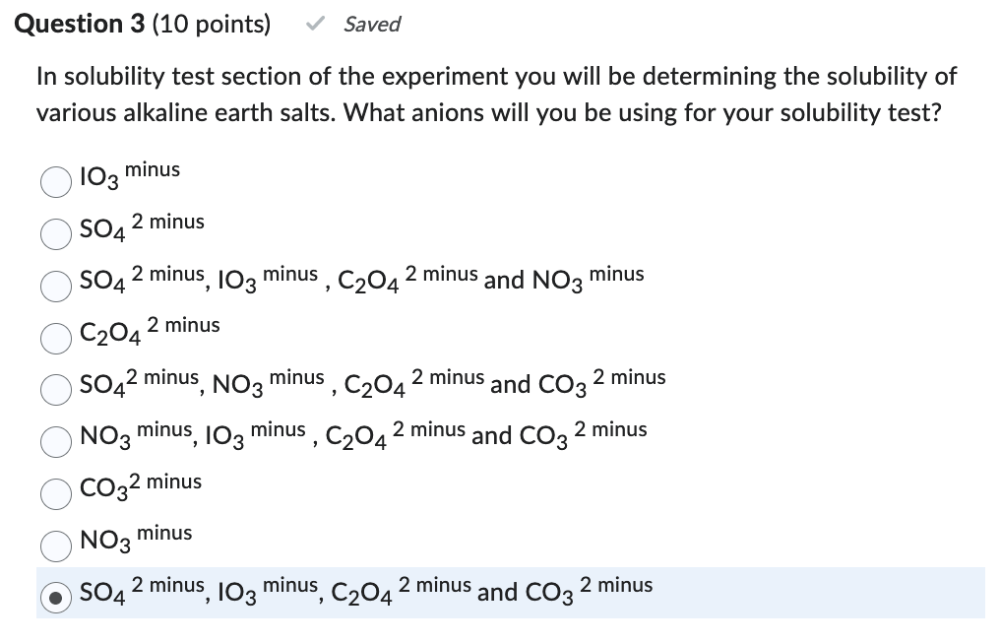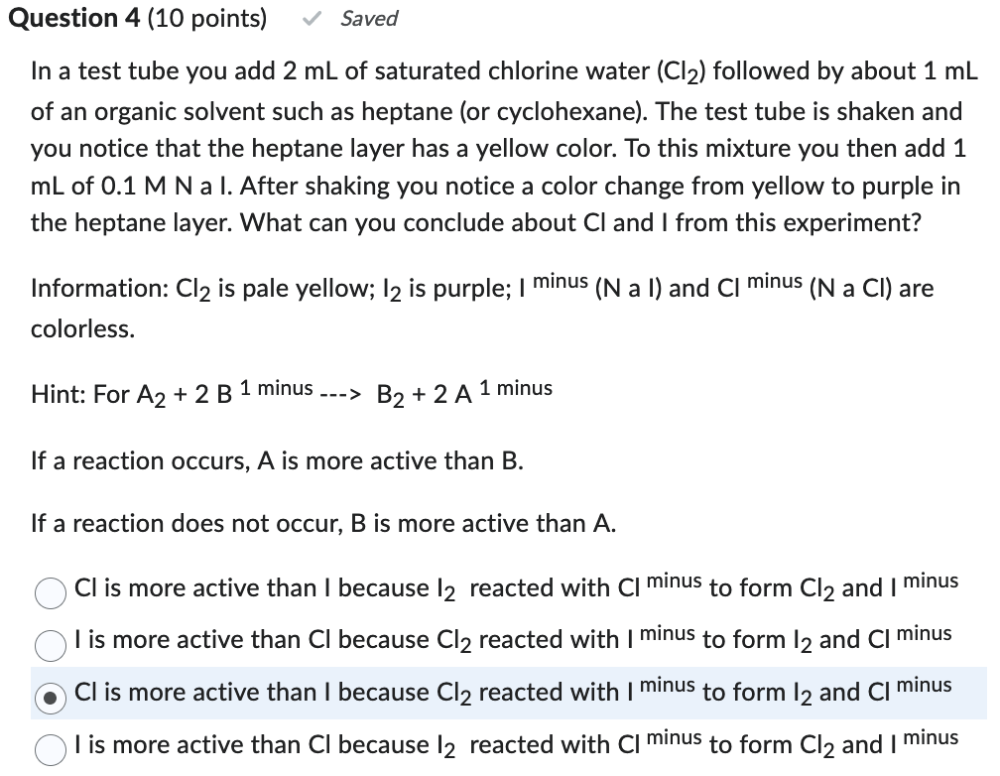Instructions for Side by Side Printing
- Print the notecards
- Fold each page in half along the solid vertical line
- Cut out the notecards by cutting along each horizontal dotted line
- Optional: Glue, tape or staple the ends of each notecard together
Prelab for Determination of an Ionic Compound SD
front 1  What famil(y)ies of the periodic table is/are being investigated in this experiment? | back 1 Halogens AND Alkaline earth metals |
front 2  Use the following chemical equation to answer the following question X2 + 2Y 1 minus ----> 2X 1 minus + Y2 What species is being reduced? | back 2 X2 |
front 3  In solubility test section of the experiment you will be determining the solubility of various alkaline earth salts. What anions will you be using for your solubility test? | back 3 SO4 2 minus, IO3 minus, C2O4 2 minus and CO3 2 minus |
front 4  In a test tube you add 2 mL of saturated chlorine water (Cl2) followed by about 1 mL of an organic solvent such as heptane (or cyclohexane). The test tube is shaken and you notice that the heptane layer has a yellow color. To this mixture you then add 1 mL of 0.1 M N a I. After shaking you notice a color change from yellow to purple in the heptane layer. What can you conclude about Cl and I from this experiment? Information: Cl2 is pale yellow; I2 is purple; I minus (N a I) and Cl minus (N a Cl) are colorless. Hint: For A2 + 2 B 1 minus ---> B2 + 2 A 1 minus If a reaction occurs, A is more active than B. If a reaction does not occur, B is more active than A. | back 4 Cl is more active than I because Cl2 reacted with I minus to form I2 and Cl minus Ex. By sholanejo on Brainly, https://brainly.com/question/15720257 The organic compounds (heptane/cyclohexane) will get dissolve in Cl₂ water forming a yellow colored solution. When NaI is added into it, the following reaction between NaI and Cl2 takes place; Cl₂ + NaI ⇒ I₂ + NaCl In above reaction, oxidation state of Cl is getting reduced from 0 in Cl2 to -1 in NaCl. Therefore, Cl2 is getting reduced and acting as an oxidizing agent in the reaction. While I⁻ is getting oxidised annd acting as a reducing agent. |